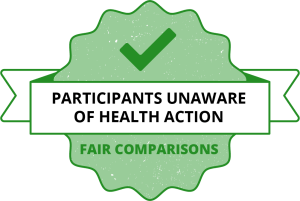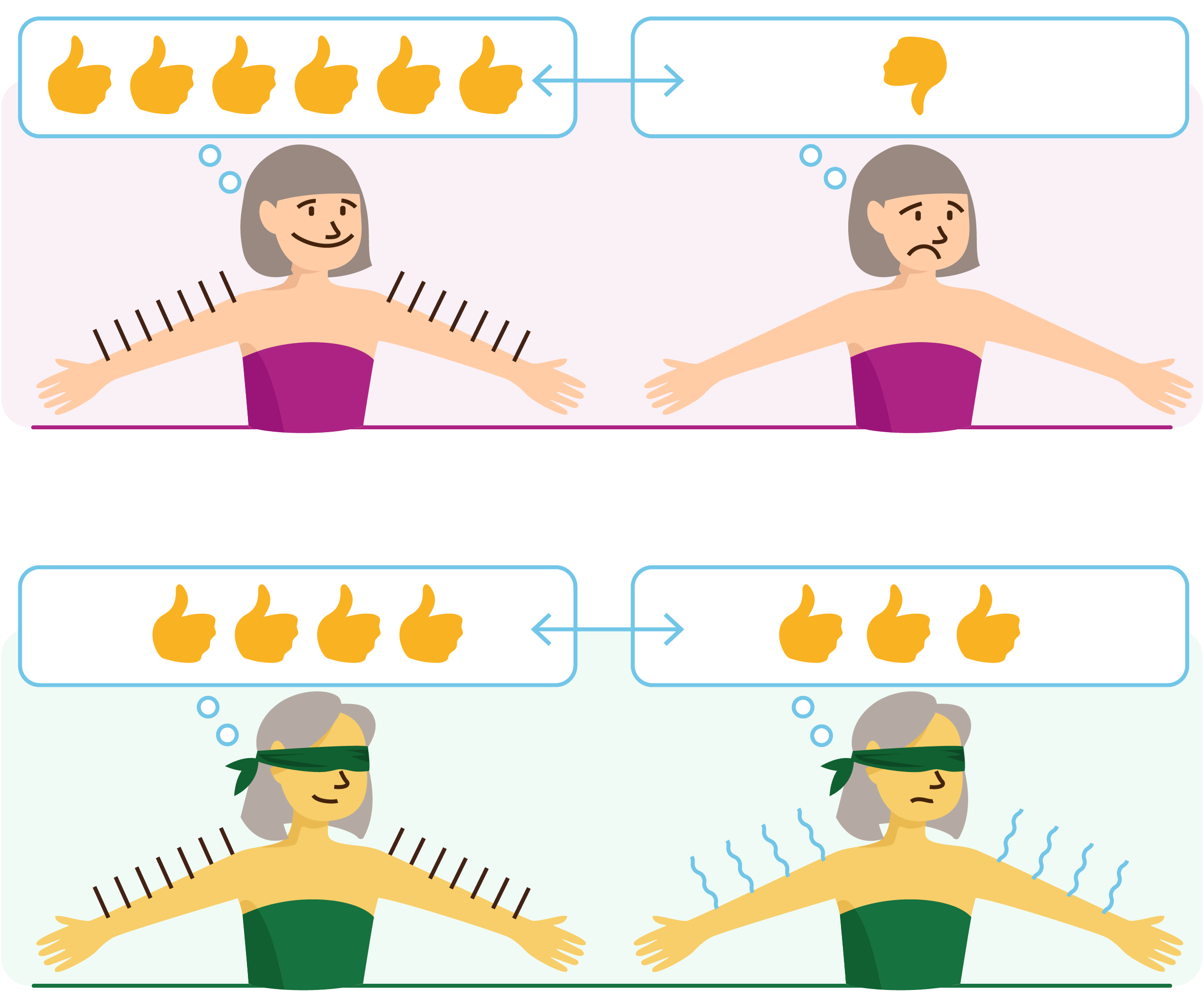 Consider whether the people being compared knew which treatments they received.
Consider whether the people being compared knew which treatments they received.
In a comparison, participants may behave differently or experience improvements or deterioration because they know the health action to which they have been allocated. The results of such comparisons can be misleading.
Explanation
In a comparison of health actions (things people do for their health), if the participants know to which health action they have been allocated, their expectations may lead them to behave differently or experience outcomes differently. If this is associated with an improvement in their symptoms it is known as a placebo effect; if it is associated with a harmful effect it is known as a nocebo effect. If people know that they are receiving a treatment that they believe is either better or worse than an alternative (that is, they are not “blinded”), the apparent effects of treatments may be due either to placebo or nocebo effects. The chance of being misled by placebo and nocebo effects is probably greater for physical health actions, like acupuncture or physiotherapy, and with patient-reported outcomes, such as pain, and may depend on the participants’ beliefs about the treatments being compared and what they are told.
People who are aware of the health action to which they are allocated may also seek additional care or behave differently based on which treatment they receive and their prior beliefs about the effectiveness of the treatment. If they believe a treatment is effective and they are allocated to a group receiving “no treatment”, they may decide to use the treatment anyway, to use some other treatment, or to withdraw from the study.
It is not always possible to blind the people who receive the treatments in randomized trials , and it is rarely possible in non-randomized studies such as cohort studies or case-control studies. When blinding is not possible, it is important to consider the possibility of placebo and nocebo effects, especially for patient-reported outcomes.
Example
Researchers did a systematic review of comparisons of acupuncture with “no acupuncture” (non-blinded) and acupuncture with “sham acupuncture” (blinded). In the comparison between acupuncture and no acupuncture, the participants knew which treatment they were receiving; in the comparison between acupuncture and sham acupuncture, the participants did not know which treatment they were receiving. The results of the systematic review showed that in the non-blinded comparisons the effect of acupuncture appeared larger than in the blinded comparisons.

Remember: Be careful about relying on the results of comparisons of health actions if the participants knew which treatment they received. This may have affected their expectations or behaviour.
Primary school
- Lesson 6. Fair comparisons of treatments. In: The Health Choices Book.
- Animation: Fair comparisons of treatments – The Health Choice Book.
Other
- Video: The power of the placebo effect This is a TEDEd video lasting 4:38 minutes.
- Video: The strange science of the placebo effect This is a PBS video lasting 7:13 minutes.
- Blog: People should not know which treatment they got. Students 4 Best Evidence.
- Article: Blinding in clinical trials and other studies. BMJ 2000; 321:504.
